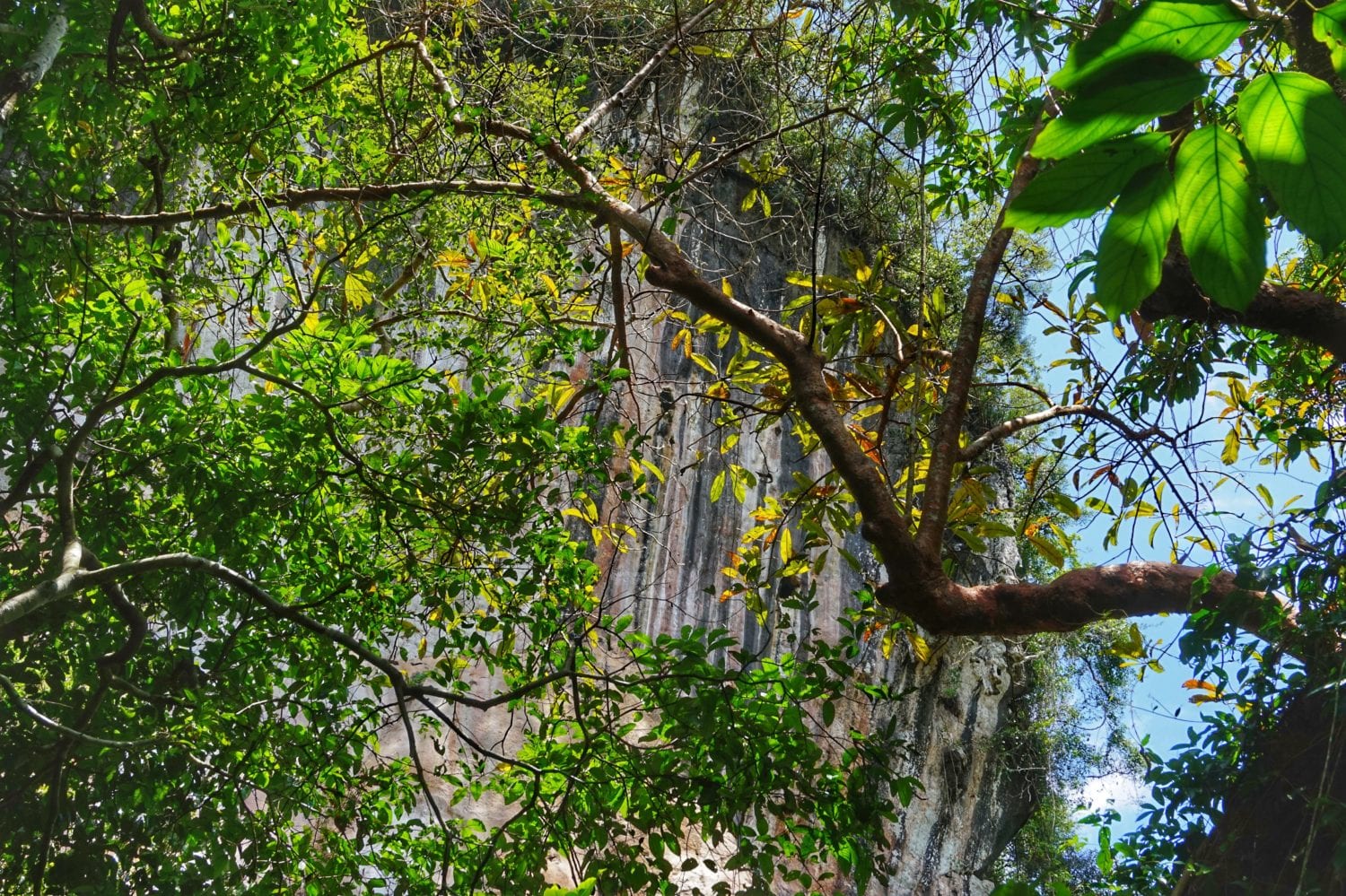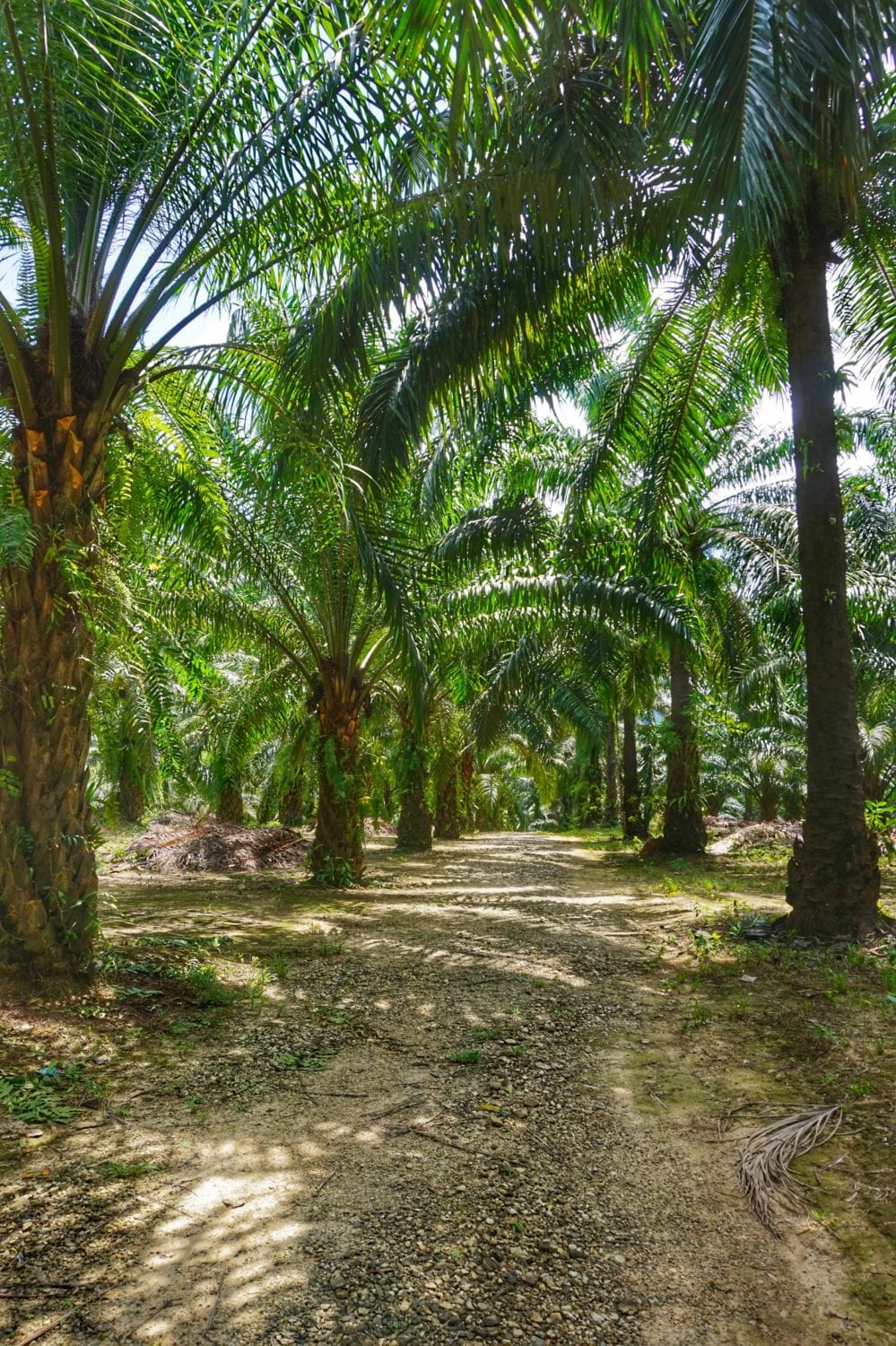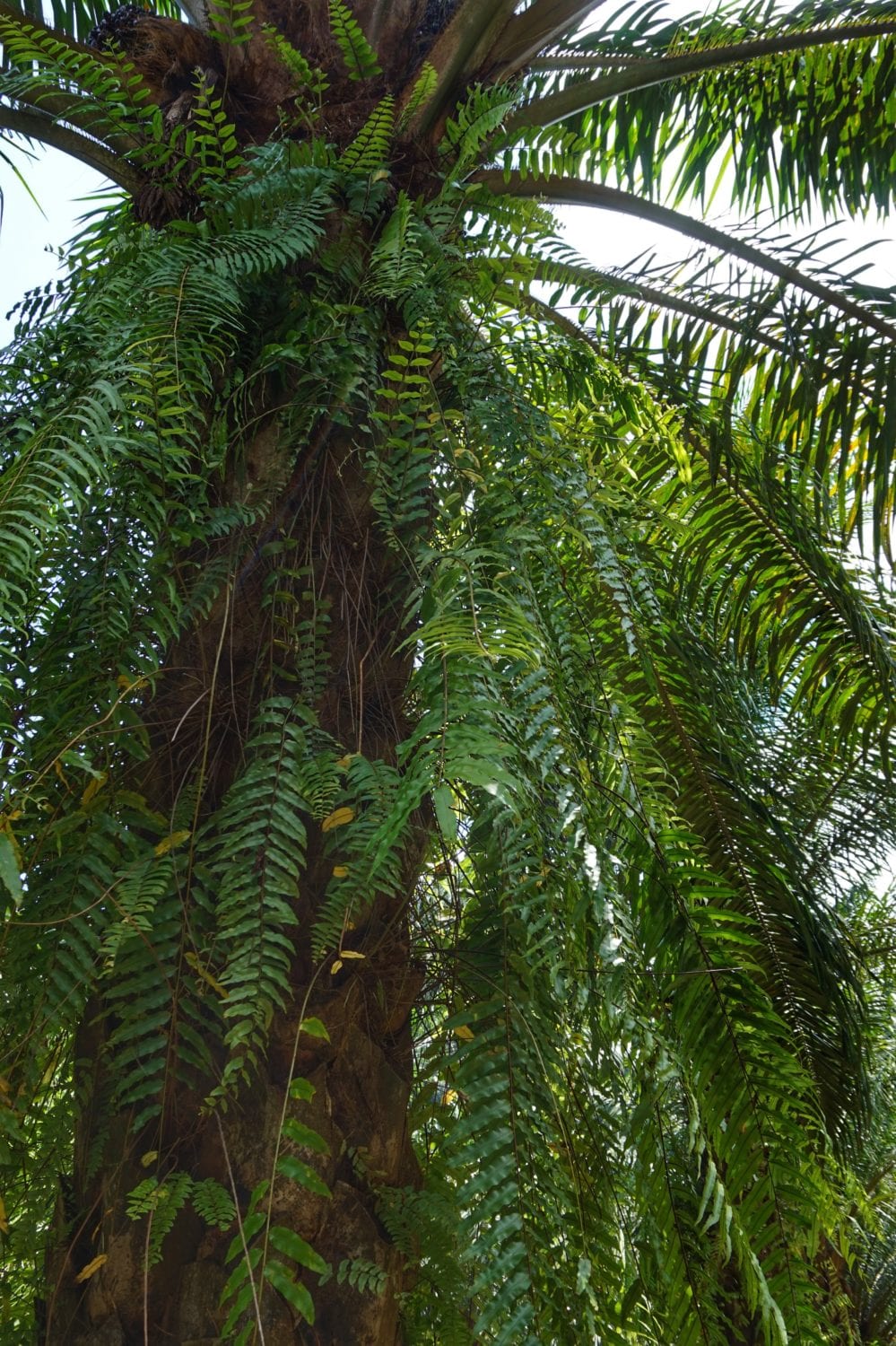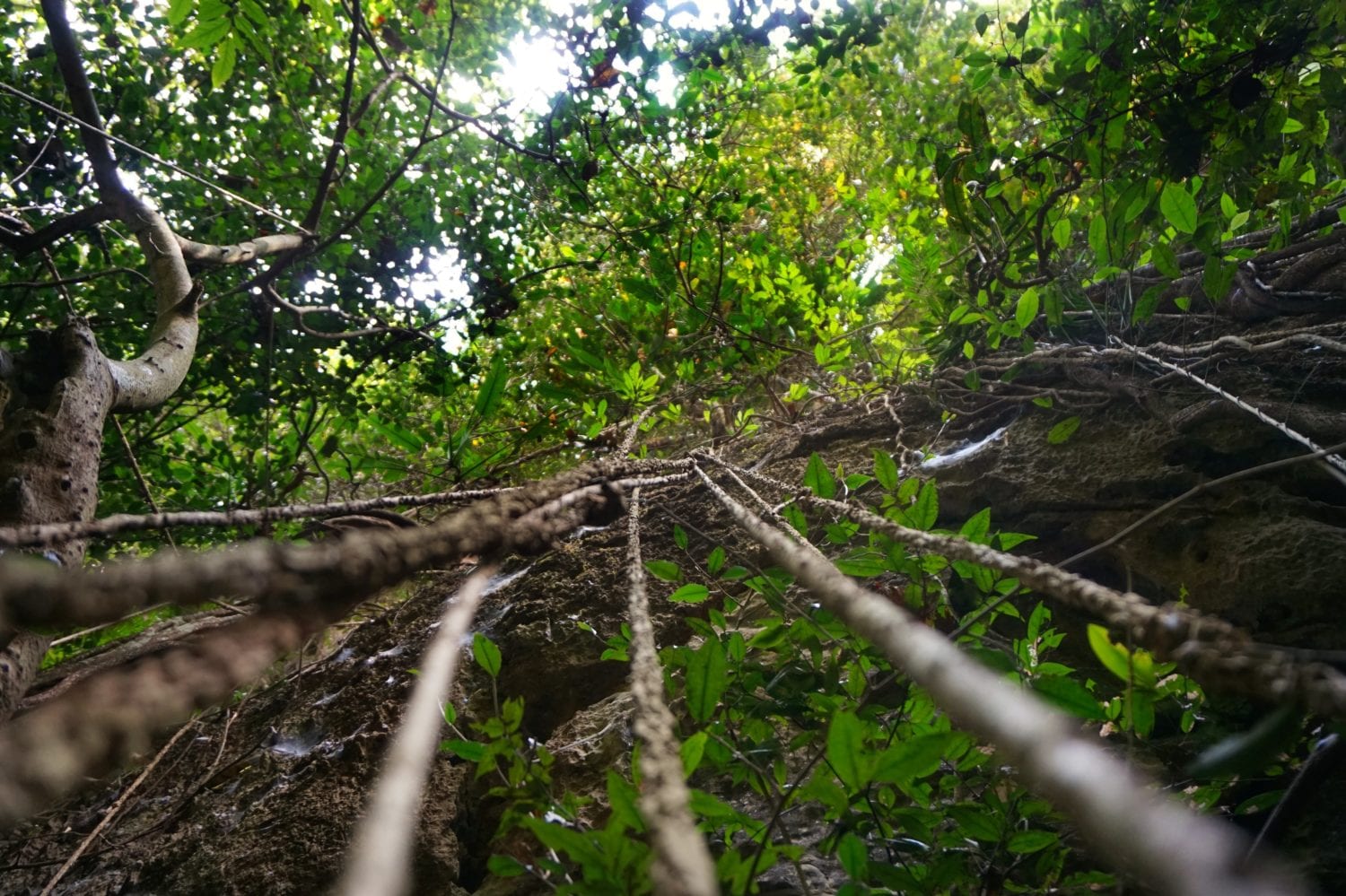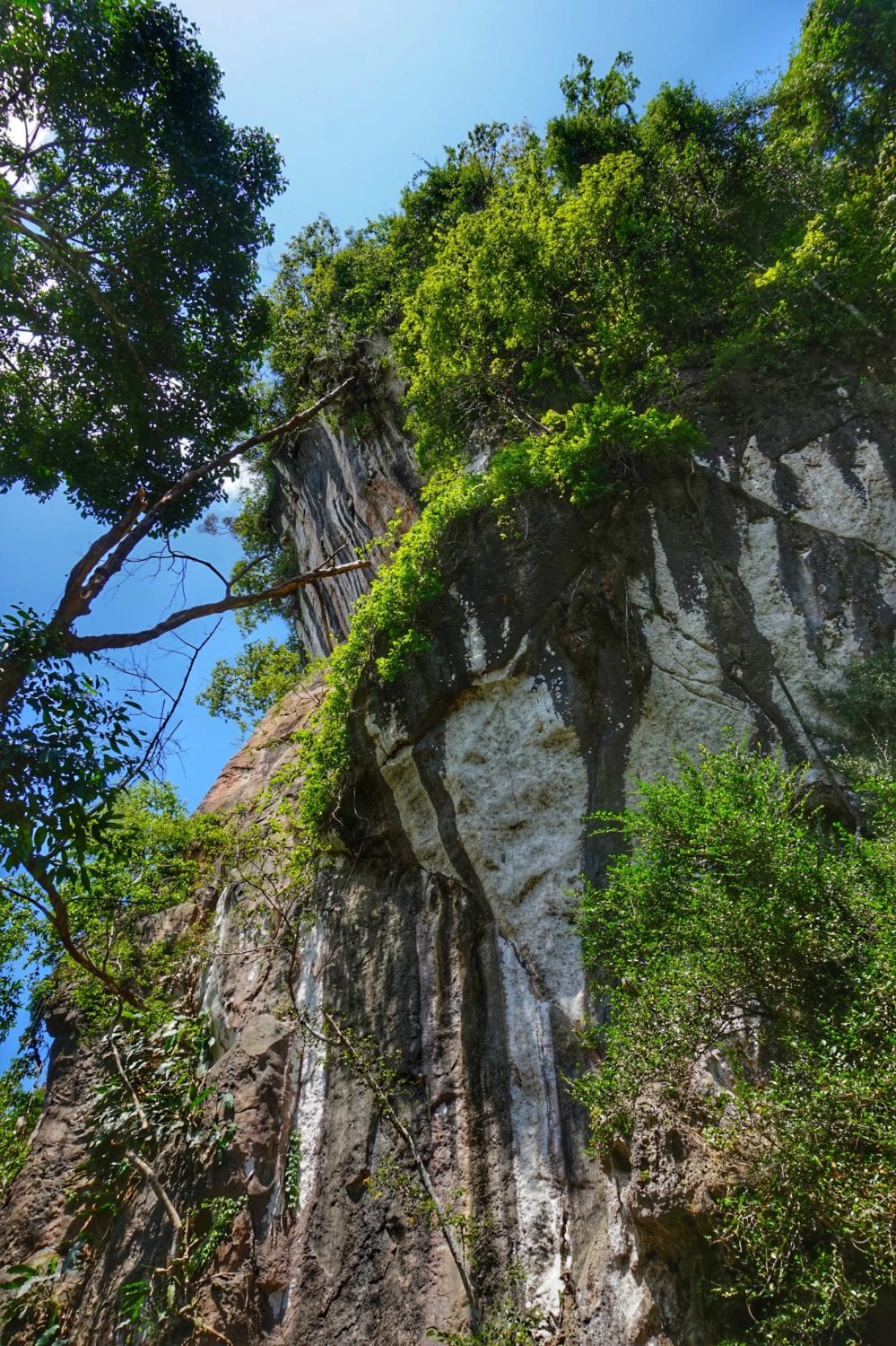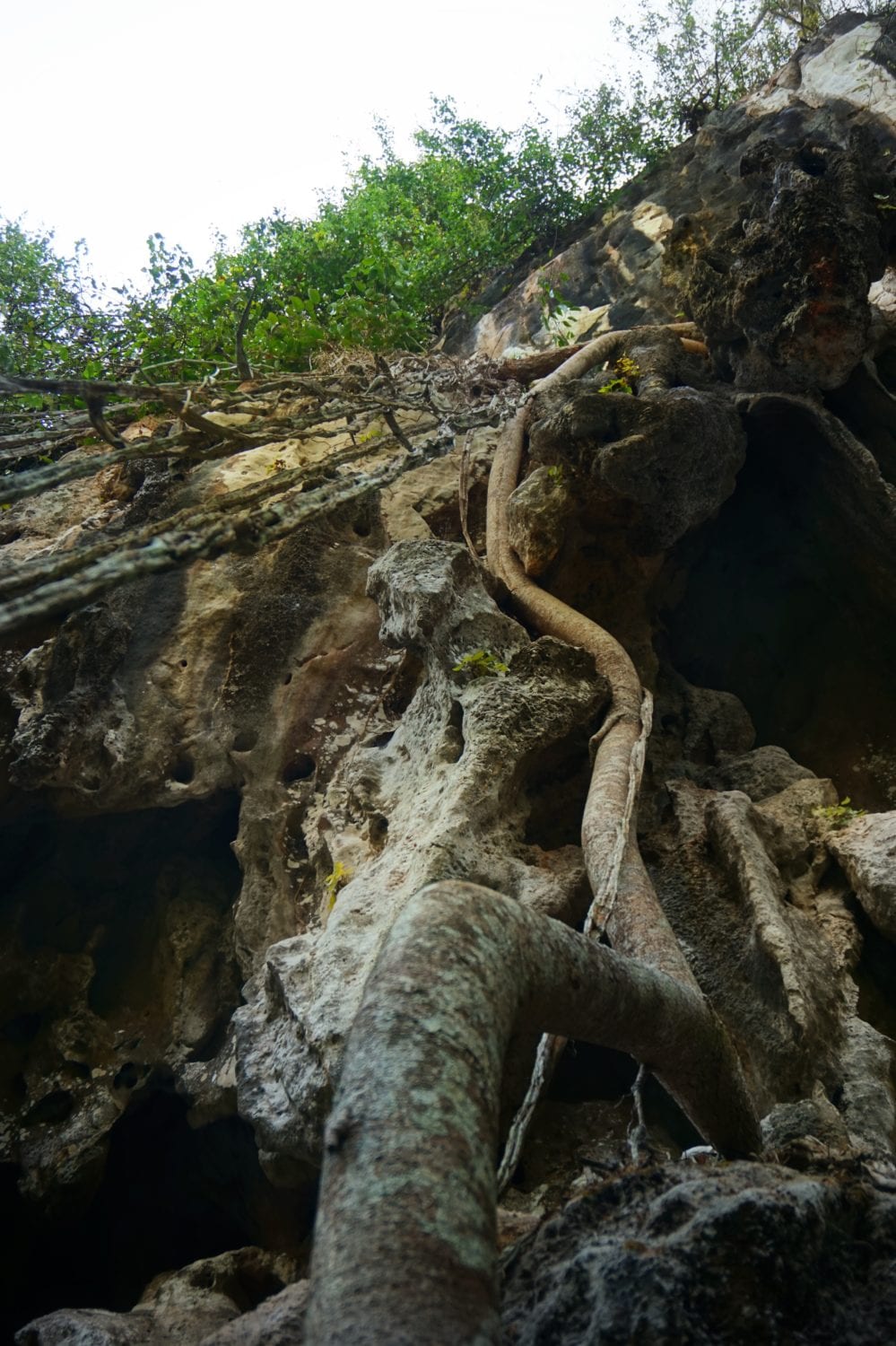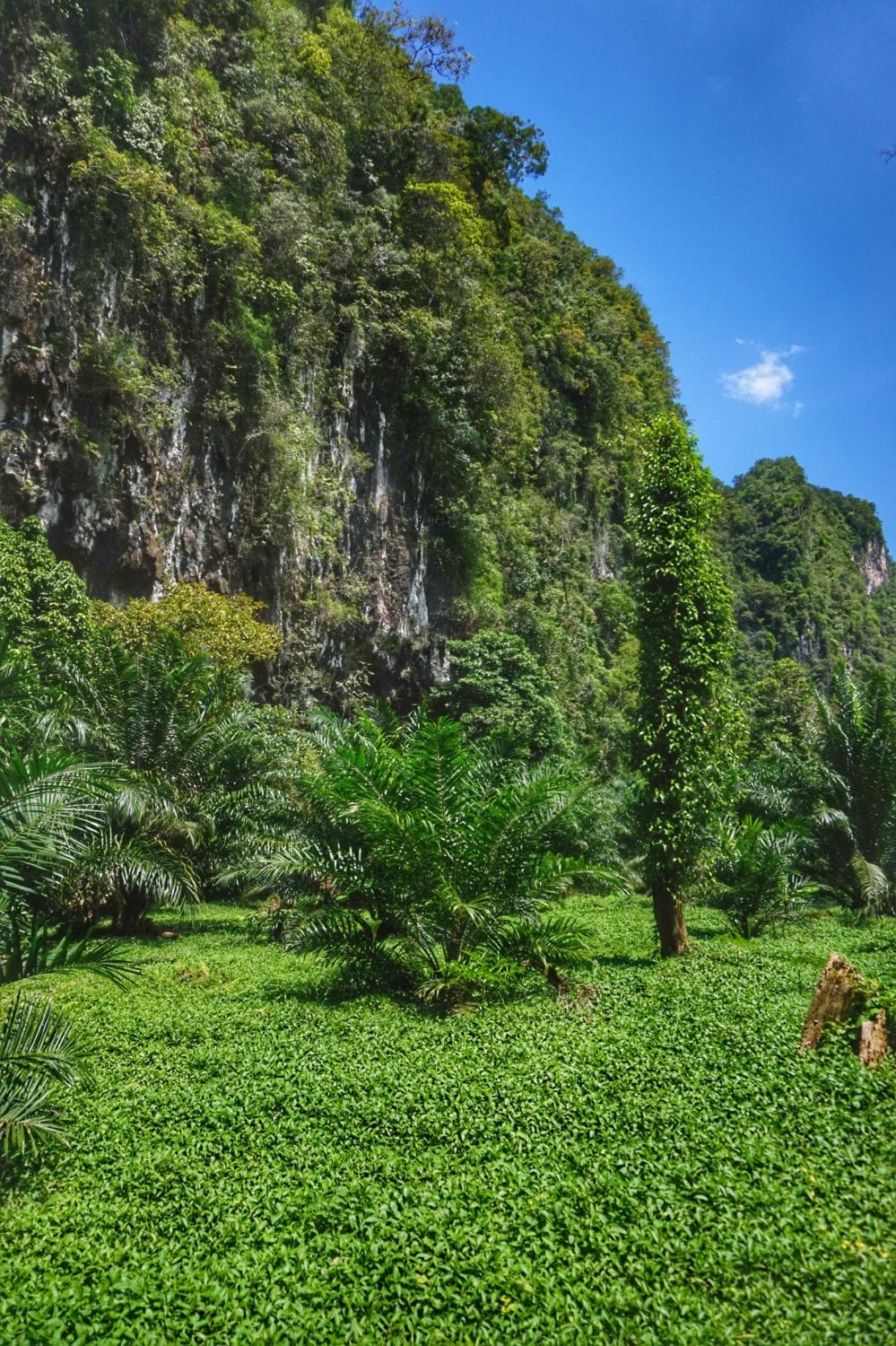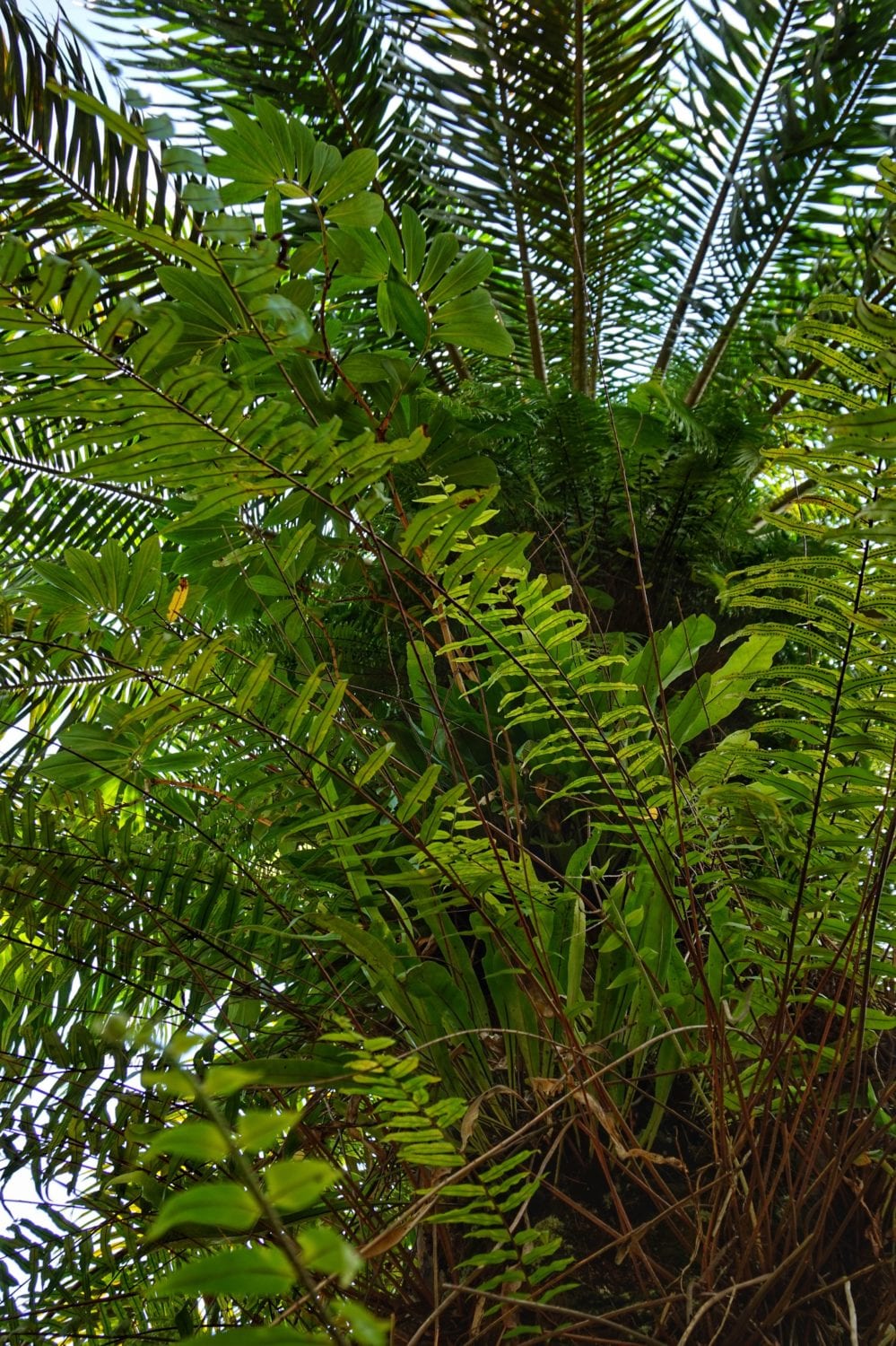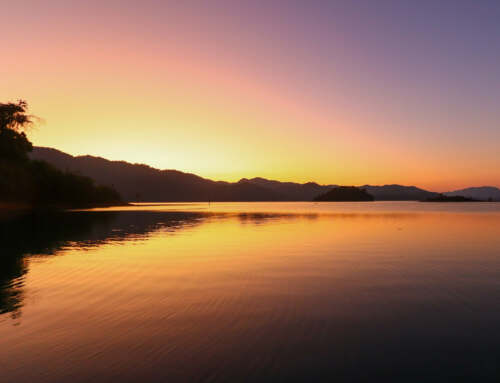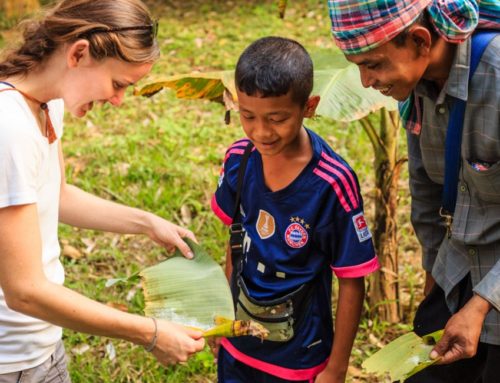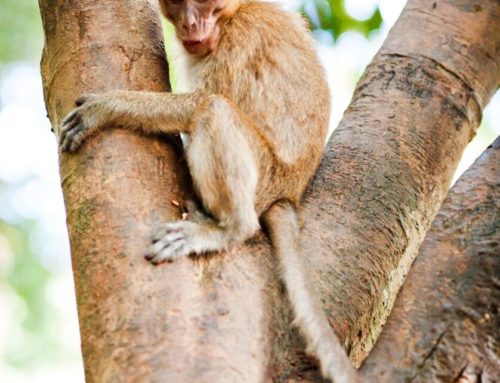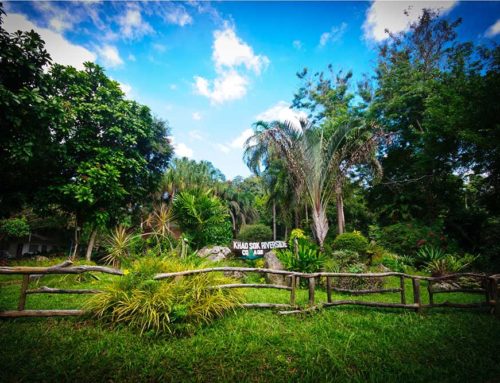There are many benefits to staying at a Khao Sok resort that is located in an isolated, natural setting. It is peaceful and quiet, for example, and guests can enjoy the full jungle experience. However, a location well away from the town center can be a difficult place to stay entertained, especially for children. Recognizing this, we have developed a variety of free diversions, such as a game library, river tubes, and free WIFI. Our favorite diversion, though, is our Khao Sok nature trail, which we will look at here.
A glimpse into the past: our Khao Sok nature trail begins
Suitable for all ages and abilities, our Khao Sok nature trail begins after a 1-minute walk up the road. Guests will begin by crossing through a neighboring oil palm plantation. The oil palm has an interesting history in Southeast Asia, and it is often villianized by wildlife and environmental organizations.
Cash crops, such as oil palm, come in cycles in Southeast Asia. As one crop becomes more lucrative, others fade out. Farmers, struggling to support their families, plant whatever yields the greatest financial return, depending on the needs of the time.
Lately, the most popular cash crop is the oil palm. Walking our Khao Sok nature trail, you can see older varieties of oil palm, as well as older fruit trees. These are remnants from previous generations of cash crops. It is comforting to know that the Khao Sok jungle was not razed to plant oil palm. Instead this area has been used for years and years with sustainable farming practices.
Compared to other neighboring countries, Thailand’s history of oil palm and cash crops is special. In contrast to other Southeast Asian nations, many independent farms in Thailand retain their autonomy. Elsewhere in the region, these farms are controlled by larger conglomerate entities that exploit poor farmers.
Karst cliffs
The oil palm plantation comes to an end at the face of a massive karst cliff. Next, our Khao Sok nature trail will bring you up close and personal with this stunning landmark. Approaching the cliff, keep an eye on the left side of the trail. Here, you will find a small path which will lead you into a series of small caves and spectacular overhangs.
Karst cliffs like these are a record of Khao Sok’s rich geologic history. This limestone was once beneath a shallow sea, formed during the Carboniferous Period (359.2-299 million years ago). Sediment from the surrounding Shan-Thai landmass eroded into this sea, leading to warmer, shallower conditions. Ultimately, a the right conditions formed a vast coral reef, reaching all the way from China to Borneo.
You might see ladders where locals have been collecting nitrogen-rich bat guano for fertilizer for their crops. Be careful! These ladders can be unstable and dangerous, and there are occasionally poisonous plants near the base of the cliffs.
Karst caves are essential to bats, and bats are a vital part of the ecosystem in Khao Sok. Did you know that there are 92 known species of bats in Thailand? These animals drop a staggering amount of feces across the rainforest during their nightly feeding frenzies. This fertilizer is essential to the epiphytic plants found in the rainforest canopy
A taste of jungle
Continuing around the cliff edge, you will enter a corridor of dense, natural jungle. This is the next section of our Khao Sok nature trail. Take a moment to take in the sounds of nature around you. Maybe you hear the buzz of a cicada, or perhaps the low call of the Coulcul. This is a large crow-like bird with coppery-brown wings. If you are lucky, you may even hear the sounds of gibbons high in the treetops. Gibbons mate for life, and the longer a female’s call is, the longer she and her mate have been together.
Looking into the canopy, you are likely to see Rattan vines. Although it looks like a cross between a cactus and bamboo, it is neither. Instead, it is a type of palm, which grows quickly, and uses its barbs to prevent falling during heavy winds. Additionally, the barbs attach to faster growing plants that will pull it higher into the rainforest canopy. Here, it can receive more sunlight. Rattan is commonly used to make furniture in Thailand, as it is incredibly flexible and strong. This plant also holds much water, and finding the best vines is an important skill for Khao Sok’s local guides.
The Strangler Fig
Our Khao Sok nature trail provides an excellent example of a jungle icon as you turn left to walk around the cliff: the Strangler Fig. Although it looks like a tree, this plant is actually a type of liana vine. It produces a large amount of fruit, attracting a variety of animals. Animals like birds, monkeys, gibbons, and small rodents eat the figs and pass the undigested seeds through their feces. Then, when the seeds fall onto a tree branch with the appropriate amount of light, they send down roots. Once the roots reach the forest floor, the vine can maximize its nutrient intake. Next, it begins to slowly deprive the host tree of its sunlight. Finally, after decades, the vine may “strangle” its host tree to death. The dead tree may then die and rot away, leaving the vine standing, hollow.
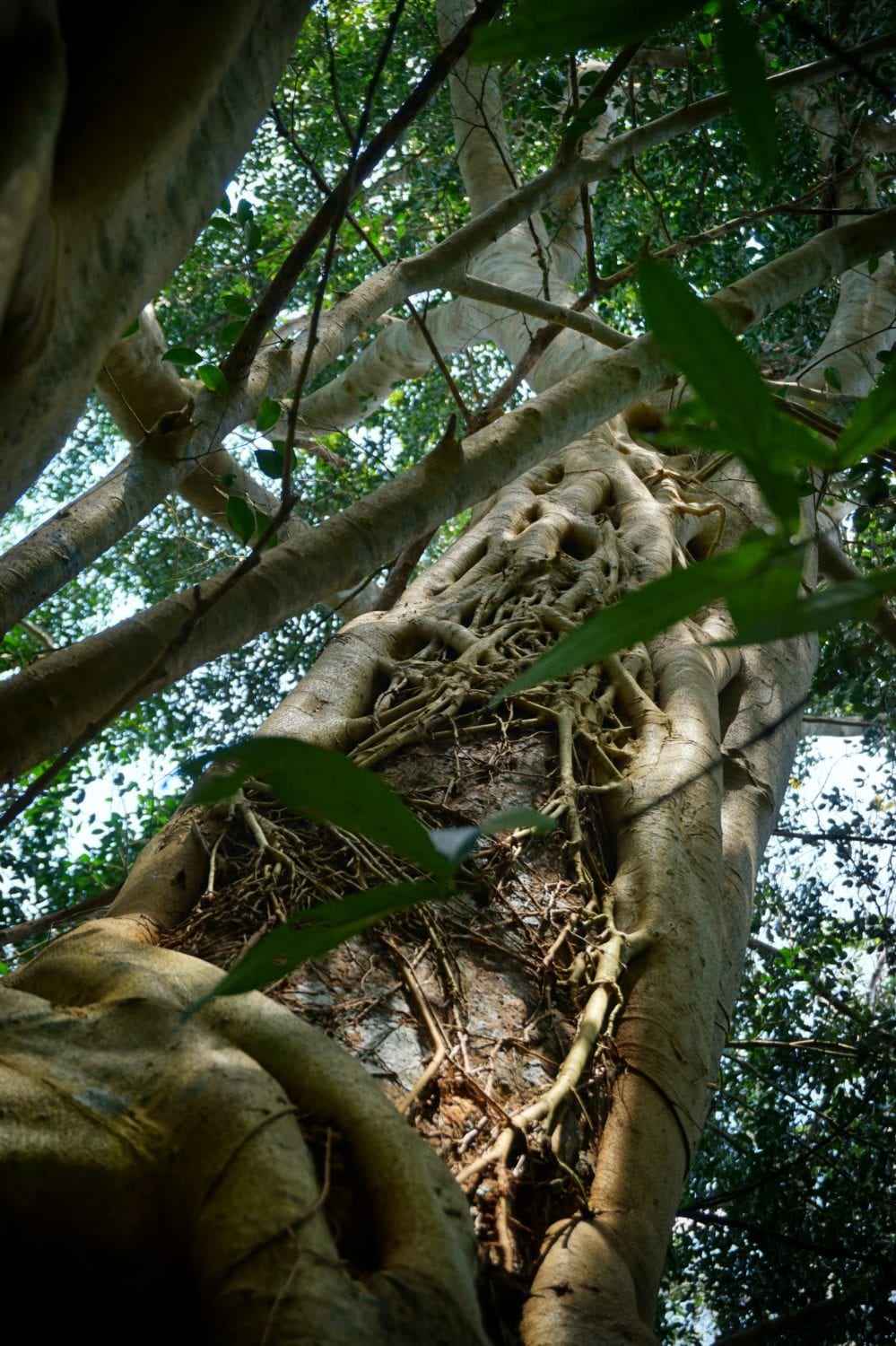
Meadow vistas
Leaving the jungle section, you will emerge into a long, wide meadow. As you walk, check out the trees around you. This field has been used for various cash crops over multiple generations. In the area, fruit trees were once popular, then coffee, then rubber trees, and now palm oil. Astute guests can find examples of all of these crops in this meadow
Our Khao Sok nature trail ends at the far side of this meadow. On the return trip, be sure to look above you! The trees overhead are packed with plants called Epiphytes. These are plants that grow on top of other plants without harming them. The largest, most impressive type of epiphyte is the fern. These plants simply use trees as perches to maximize the light and water they receive.
Our Khao Sok nature trail begins with a stroll through the socioeconomic history of the Khao Sok surrounding area, and brings you into contact with some of Khao Sok’s most famous features. When you arrive at Khao Sok Riverside Cottages, be sure to get a map at reception!
You can find the full activities list and suggested itineraries on Riverside Cottages website. Once you’re in Khao Sok our staff will make sure you get the most from your time here!
Nature-watching is another low-cost way to spend a day! Be sure to read our blog about the wildlife of Riverside Cottages!
Wondering what else to do in Khao Sok? Read up on our Top 6 Khao Sok activities!
Find your perfect Khao Sok accommodation and dare to explore the depths of Khao Sok jungle!

